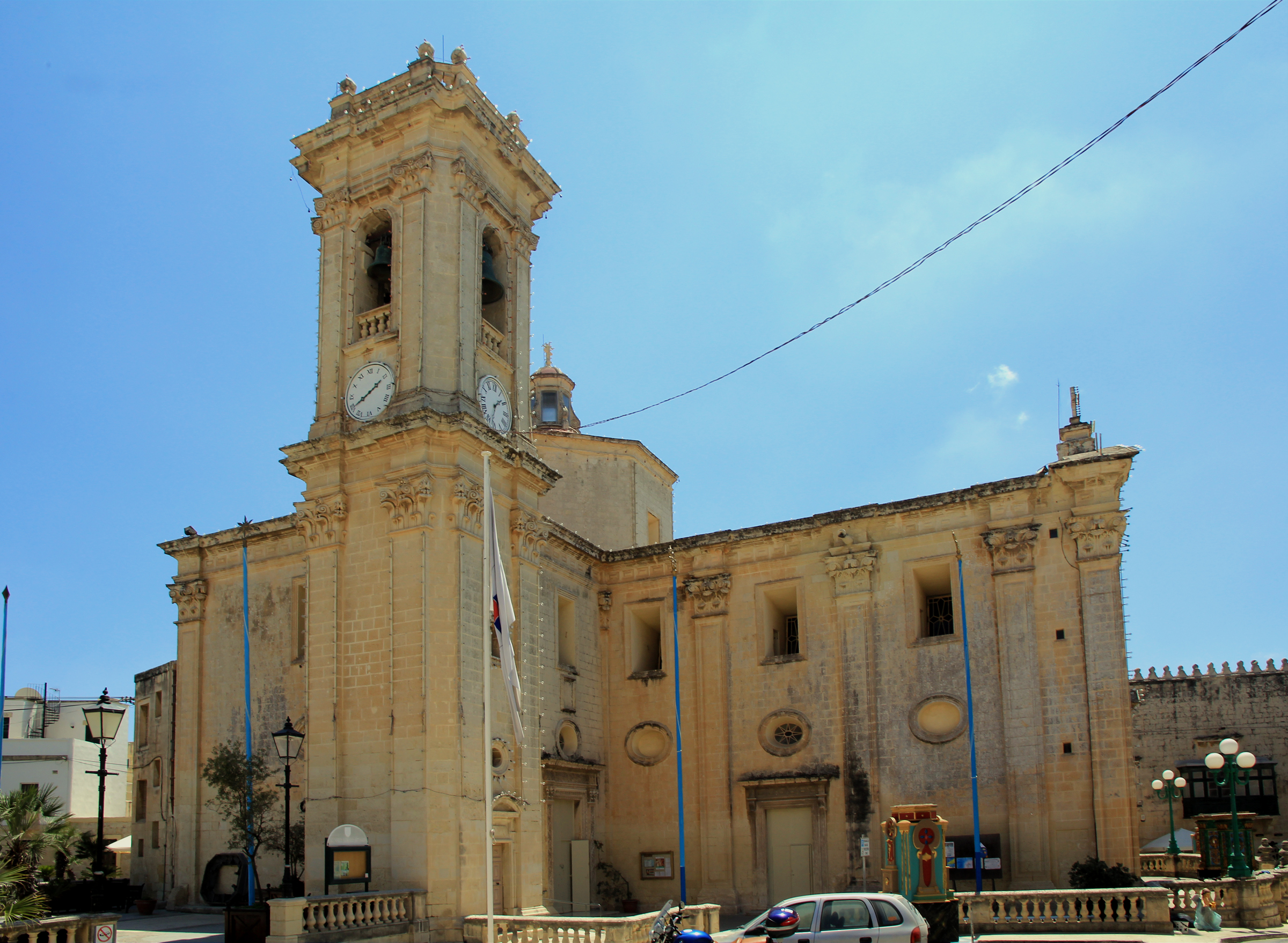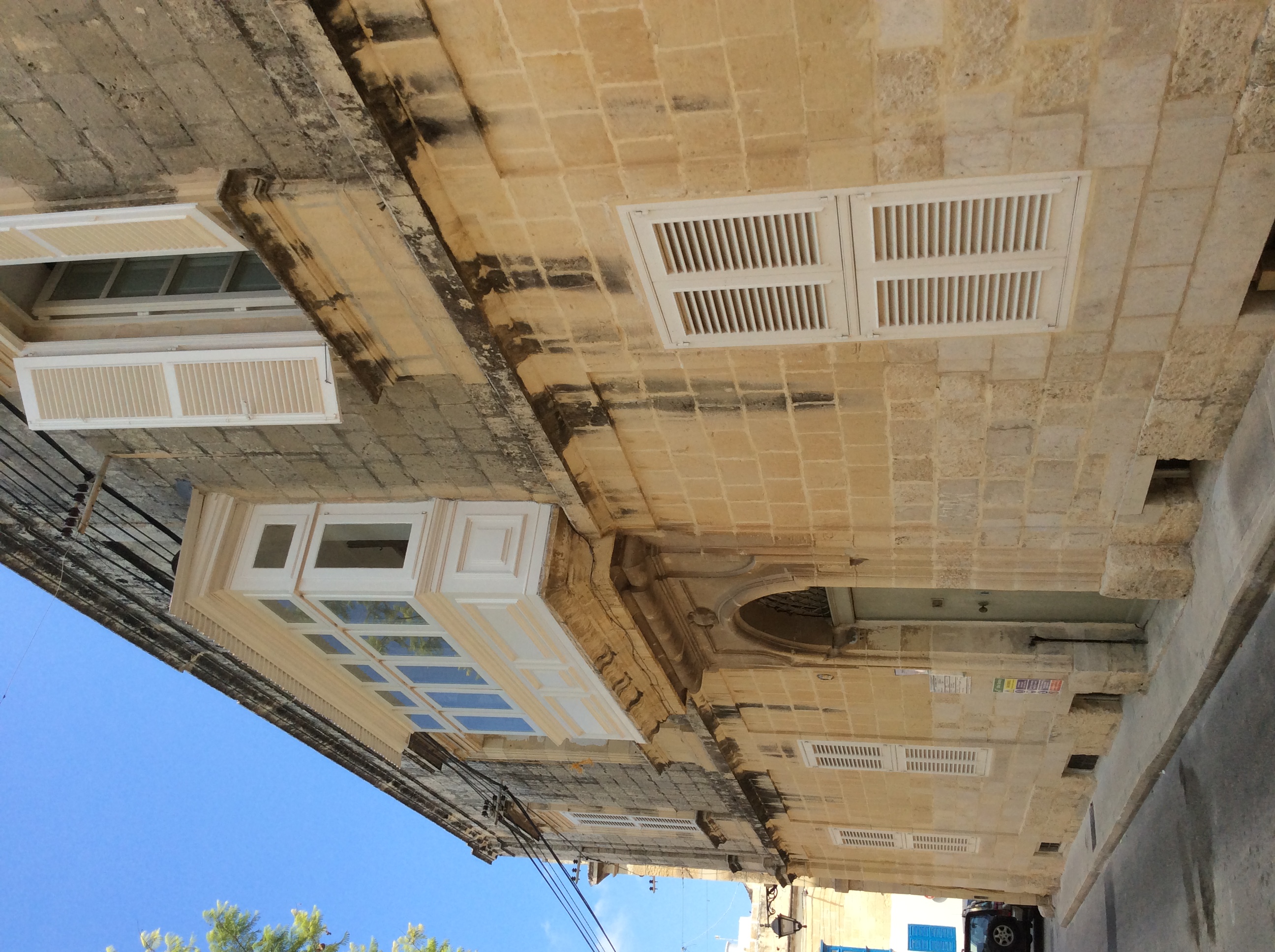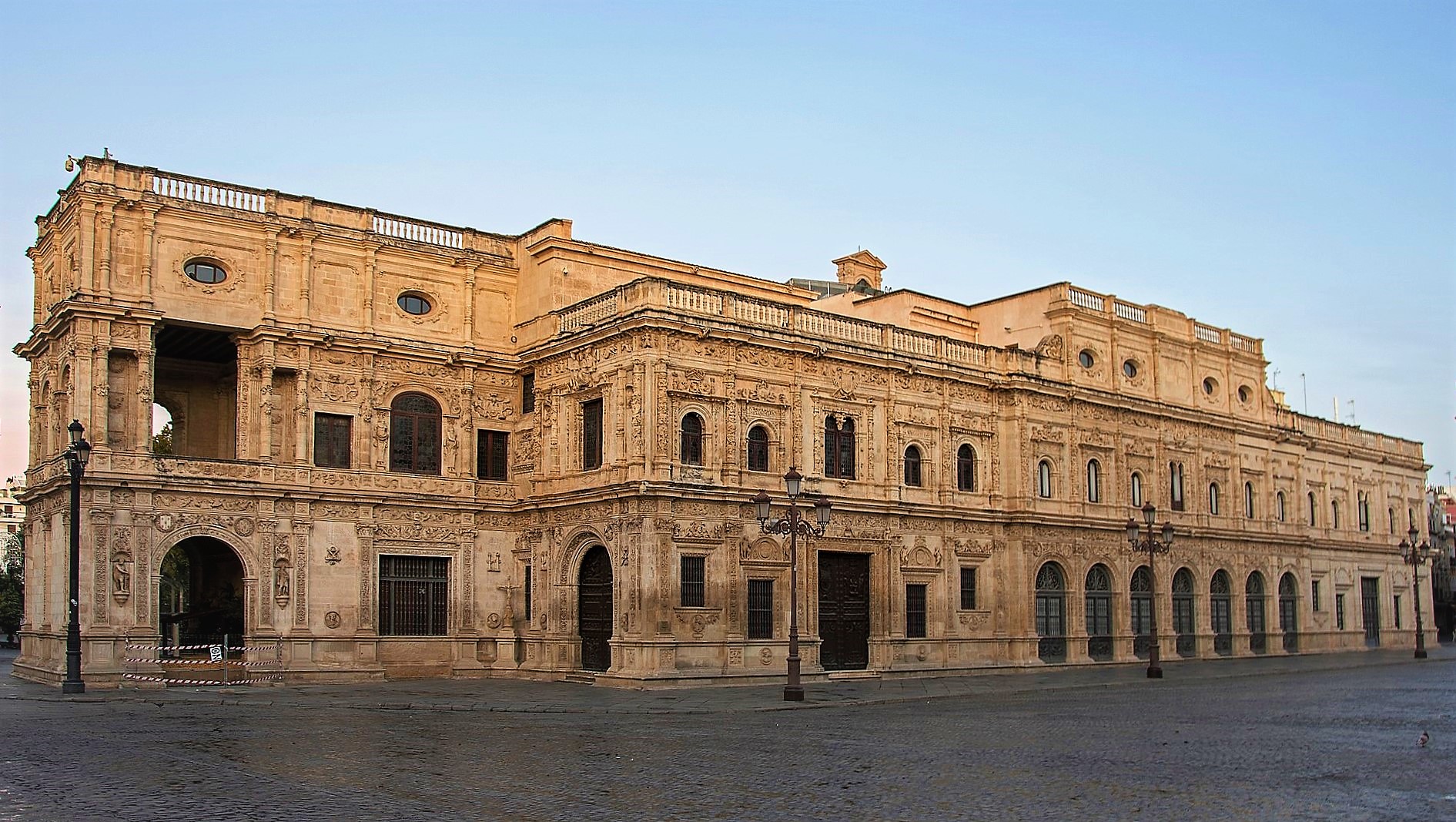|
Parish Church Of St. Mary, Attard
The Parish Church of Saint Mary () is a Roman Catholic parish church in Attard, Malta, dedicated to the Assumption of Mary. Built between 1613 and 1624, the church is attributed to the architect Tommaso Dingli and it is regarded as the finest Renaissance architecture, Renaissance church in Malta. It still retains its original design, with the exception of a belfry and two sacristies which were added in the 18th and 19th centuries. History The Parish Church of St. Mary was built between 1613 and 1624, and its design is attributed to the architect Tommaso Dingli. The sculptures within the church are the work of Dingli himself and Giovanni Attard. Although Dingli had planned a belfry in the church, this was not built until 1718–19. It is sometimes attributed to the architect Giovanni Barbara, but there is no proof supporting this claim. The belfry has five bells, which were founded between 1713 and 1830. The clock on the belfry was made by Michelangelo Sapiano in 1872. The church ... [...More Info...] [...Related Items...] OR: [Wikipedia] [Google] [Baidu] |
Attard
Attard () is a town in the Northern Region of Malta. Together with Balzan and Lija, it forms part of the " Three Villages" () and has been inhabited since the Classical Period. It has a population of 12,268 as of 2021. Attard's traditional Latin motto is ''Florigera rosis halo'' ("I perfume the air with my blossoms") due to its many flower gardens and citrus orchards. Attard is abundant in public gardens. The inhabitants of Attard are known as ''saraċini''. Etymology The name of 'Attard' is thought to have been derived from a surname assumed to belong to the first person who lived there. It is unclear what the word 'Attard' means. Some say it means blossoms as the word 'Attar' means fresh oil of the flowers or from the Arabic 'Atr', meaning perfume. Another derivation for the surname is the Italian town of "Atti" in Bologna. A few maps from the 1600s also show Attard listed as 'C. Attardo', which might show where the village name derives from. Municipality As a munici ... [...More Info...] [...Related Items...] OR: [Wikipedia] [Google] [Baidu] |
Parish Church Of St
A parish is a territorial entity in many Christian denominations, constituting a division within a diocese. A parish is under the pastoral care and clerical jurisdiction of a priest, often termed a parish priest, who might be assisted by one or more curates, and who operates from a parish church. Historically, a parish often covered the same geographical area as a manor. Its association with the parish church remains paramount. By extension the term ''parish'' refers not only to the territorial entity but to the people of its community or congregation as well as to church property within it. In England this church property was technically in ownership of the parish priest ''ex officio'', vested in him on his institution to that parish. Etymology and use First attested in English in the late 13th century, the word ''parish'' comes from the Old French , in turn from , the Romanisation of the , "sojourning in a foreign land", itself from (''paroikos''), "dwelling beside, st ... [...More Info...] [...Related Items...] OR: [Wikipedia] [Google] [Baidu] |
Limestone Churches In Malta
Limestone is a type of carbonate sedimentary rock which is the main source of the material lime. It is composed mostly of the minerals calcite and aragonite, which are different crystal forms of calcium carbonate . Limestone forms when these minerals precipitate out of water containing dissolved calcium. This can take place through both biological and nonbiological processes, though biological processes, such as the accumulation of corals and shells in the sea, have likely been more important for the last 540 million years. Limestone often contains fossils which provide scientists with information on ancient environments and on the evolution of life. About 20% to 25% of sedimentary rock is carbonate rock, and most of this is limestone. The remaining carbonate rock is mostly dolomite, a closely related rock, which contains a high percentage of the mineral dolomite, . ''Magnesian limestone'' is an obsolete and poorly-defined term used variously for dolomite, for limestone con ... [...More Info...] [...Related Items...] OR: [Wikipedia] [Google] [Baidu] |
Renaissance Architecture In Malta
The Renaissance ( , ) is a Periodization, period of history and a European cultural movement covering the 15th and 16th centuries. It marked the transition from the Middle Ages to modernity and was characterized by an effort to revive and surpass the ideas and achievements of classical antiquity. Associated with great social change in most fields and disciplines, including Renaissance art, art, Renaissance architecture, architecture, politics, Renaissance literature, literature, Renaissance exploration, exploration and Science in the Renaissance, science, the Renaissance was first centered in the Republic of Florence, then spread to the Italian Renaissance, rest of Italy and later throughout Europe. The term ''rinascita'' ("rebirth") first appeared in ''Lives of the Artists'' () by Giorgio Vasari, while the corresponding French word was adopted into English as the term for this period during the 1830s. The Renaissance's intellectual basis was founded in its version of Renaiss ... [...More Info...] [...Related Items...] OR: [Wikipedia] [Google] [Baidu] |
17th-century Roman Catholic Church Buildings In Malta
The 17th century lasted from January 1, 1601 (represented by the Roman numerals MDCI), to December 31, 1700 (MDCC). It falls into the early modern period of Europe and in that continent (whose impact on the world was increasing) was characterized by the Baroque cultural movement, the latter part of the Spanish Golden Age, the Dutch Golden Age, the French ''Grand Siècle'' dominated by Louis XIV, the Scientific Revolution, the world's first public company and megacorporation known as the Dutch East India Company, and according to some historians, the General Crisis. From the mid-17th century, European politics were increasingly dominated by the Kingdom of France of Louis XIV, where royal power was solidified domestically in the civil war of the Fronde. The semi-feudal territorial French nobility was weakened and subjugated to the power of an absolute monarchy through the reinvention of the Palace of Versailles from a hunting lodge to a gilded prison, in which a greatly expanded r ... [...More Info...] [...Related Items...] OR: [Wikipedia] [Google] [Baidu] |
Religion In Malta
Catholic Christianity is the predominant religion in Malta. The Constitution of Malta establishes Catholicism as the state religion, and it is also reflected in various elements of Culture of Malta, Maltese culture. According to a 2018 survey, the overwhelming majority of the Maltese population adheres to Christianity (95.2%) with Catholicism as the main denomination (93.9%). According to a Eurobarometer survey conducted in 2019, 83% of the population identified as Catholic Church, Catholic. Similarly, the 2021 census of the population found that 82.6% belonged to the Catholic church. Malta's patron saints are Paul the Apostle, St Paul, St Publius and Agatha of Sicily, St Agatha. The Assumption of Mary known as Santa Marija is the special patron of several towns in Malta and she is celebrated each 15 August. Combined survey figures suggest that around half the population are not practising Catholics, or adhere to a different religion, or to none. History of religion in Ma ... [...More Info...] [...Related Items...] OR: [Wikipedia] [Google] [Baidu] |
History Of Malta
Malta has been inhabited since 6400 BC initially by Mesolithic hunter gatherers, who were replaced by Early European Farmers, Neolithic farmers from Sicily around 5400 BC. These farmers practiced mixed farming after clearing most of the existing conifer forest that dominated the islands, but their agricultural methods degraded the soil until the islands became uninhabitable. The islands were repopulated around 3850 BC by a civilization that at its peak built the Megalithic Temples of Malta, Megalithic Temples, which today are among the oldest surviving buildings in the world. Their civilization collapsed in around 2350 BC; the islands were repopulated by Bronze Age warriors soon afterwards. Malta's prehistory ends in around 700 BC, when the islands were colonized by the Phoenicians. They ruled the islands until they Capture of Malta (218 BC), fell in 218 BC to the Roman Republic. The island was acquired by the Eastern Romans or Byzantine Empire, Byzantines in ... [...More Info...] [...Related Items...] OR: [Wikipedia] [Google] [Baidu] |
Culture Of Malta
The culture of Malta has been influenced by various societies that have come into contact with the Maltese Islands throughout the centuries, including neighbouring Mediterranean cultures, and the cultures of the nations that ruled Malta for long periods of time prior to its independence in 1964. History The culture of prehistoric Malta The earliest inhabitants of the Maltese Islands are believed to have been Sicani from nearby Sicily who arrived on the island sometime before 5000 BC. They grew cereals and raised domestic livestock and, in keeping with many other ancient Mediterranean cultures, formed a fertility cult represented in Malta by statuettes of unusually large proportions. Pottery from the earliest period of Maltese civilization (known as the Għar Dalam phase) is similar to examples found in Agrigento, Sicily. These people were either supplanted by, or gave rise to a culture of megalithic temple builders, whose surviving monuments on Malta and Gozo are cons ... [...More Info...] [...Related Items...] OR: [Wikipedia] [Google] [Baidu] |
Choir (architecture)
A choir, also sometimes called quire, is the area of a church or cathedral that provides seating for the clergy and church choir. It is in the western part of the chancel, between the nave and the sanctuary, which houses the altar and Church tabernacle. In larger medieval churches it contained choir-stalls, seating aligned with the side of the church, so at right-angles to the seating for the congregation in the nave. Smaller medieval churches may not have a choir in the architectural sense at all, and they are often lacking in churches built by all denominations after the Protestant Reformation, though the Gothic Revival revived them as a distinct feature. As an architectural term "choir" remains distinct from the actual location of any singing choir – these may be located in various places, and often sing from a choir-loft, often over the door at the liturgical western end. In modern churches, the choir may be located centrally behind the altar, or the pulpit. The place w ... [...More Info...] [...Related Items...] OR: [Wikipedia] [Google] [Baidu] |
Cruciform
A cruciform is a physical manifestation resembling a common cross or Christian cross. These include architectural shapes, biology, art, and design. Cruciform architectural plan Christian churches are commonly described as having a cruciform architecture. In Early Christian, Byzantine and other Eastern Orthodox forms of church architecture this is likely to mean a tetraconch plan, a Greek cross, with arms of equal length or, later, a cross-in-square plan. In the Western churches, a cruciform architecture usually, though not exclusively, means a church built with the layout developed in Gothic architecture. This layout comprises: *An east end, containing an altar and often with an elaborate, decorated window, through which light will shine in the early part of the day. *A west end, which sometimes contains a baptismal font, being a large decorated bowl, in which water can be firstly, blessed (dedicated to the use and purposes of God) and then used for baptism. *North and s ... [...More Info...] [...Related Items...] OR: [Wikipedia] [Google] [Baidu] |
Plateresque
Plateresque, meaning "in the manner of a silversmith" (''plata'' being silver in Spanish language, Spanish), was an artistic movement, especially Architecture, architectural, developed in Spanish Empire, Spain and its territories, which appeared between the late Gothic architecture, Gothic and early Renaissance in the late 15th century and spread over the next two centuries. It is a modification of Gothic spatial concepts and an eclectic blend of Mudéjar art, Mudéjar, Flamboyant, Gothic architecture, Gothic, and Lombard architecture, Lombard decorative components, as well as Renaissance elements of Tuscany, Tuscan origin.Bozal, Valeriano; ''Art history in Spain: From the origins to the Enlightenment'', pp. 157, 165. Ed Akal (1978). . Examples of this syncretism are the inclusion of shields and pinnacles on façades, columns built in the Renaissance neoclassical manner, and façades divided into three parts (in Renaissance architecture they are divided into two). It reached its p ... [...More Info...] [...Related Items...] OR: [Wikipedia] [Google] [Baidu] |










